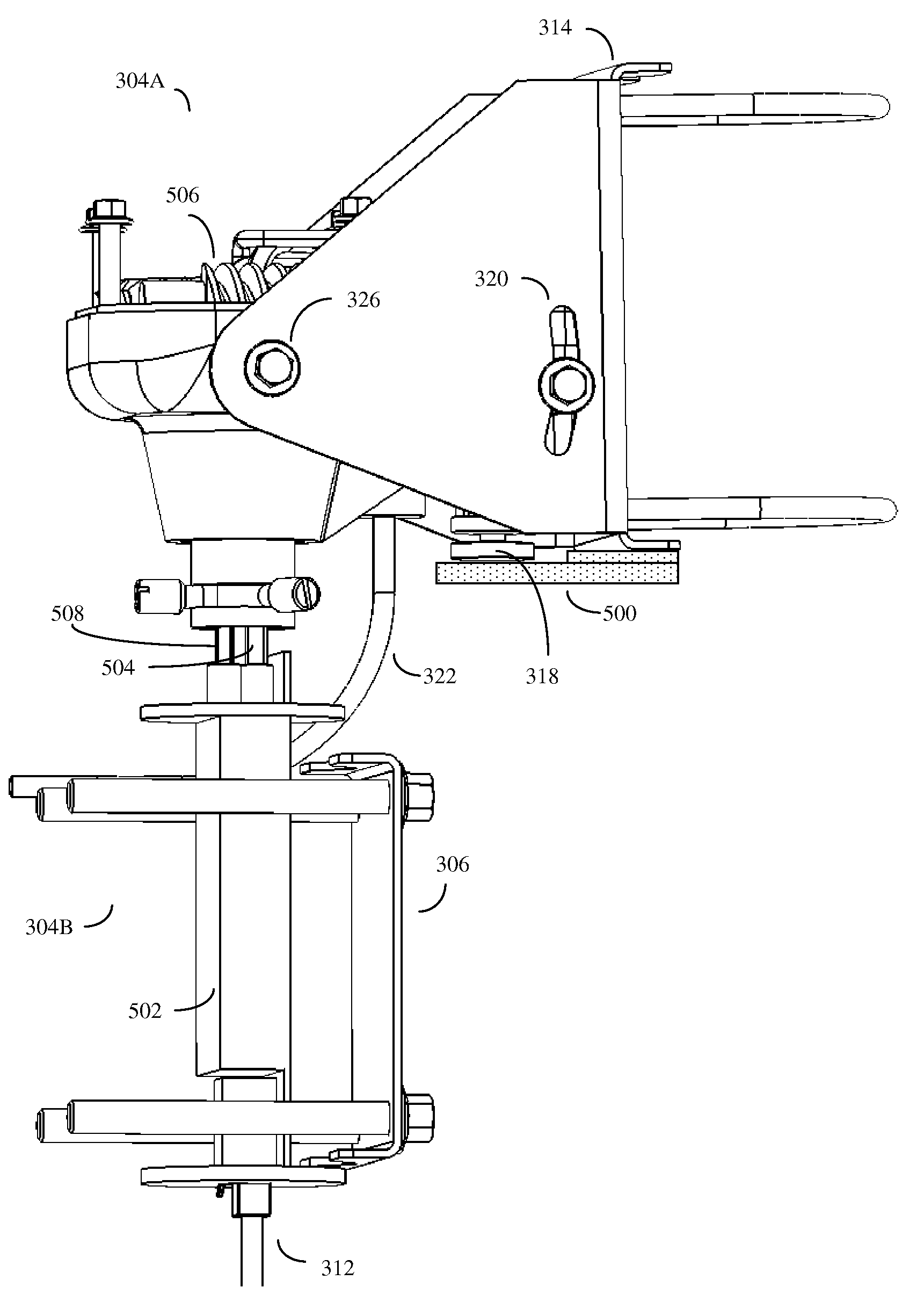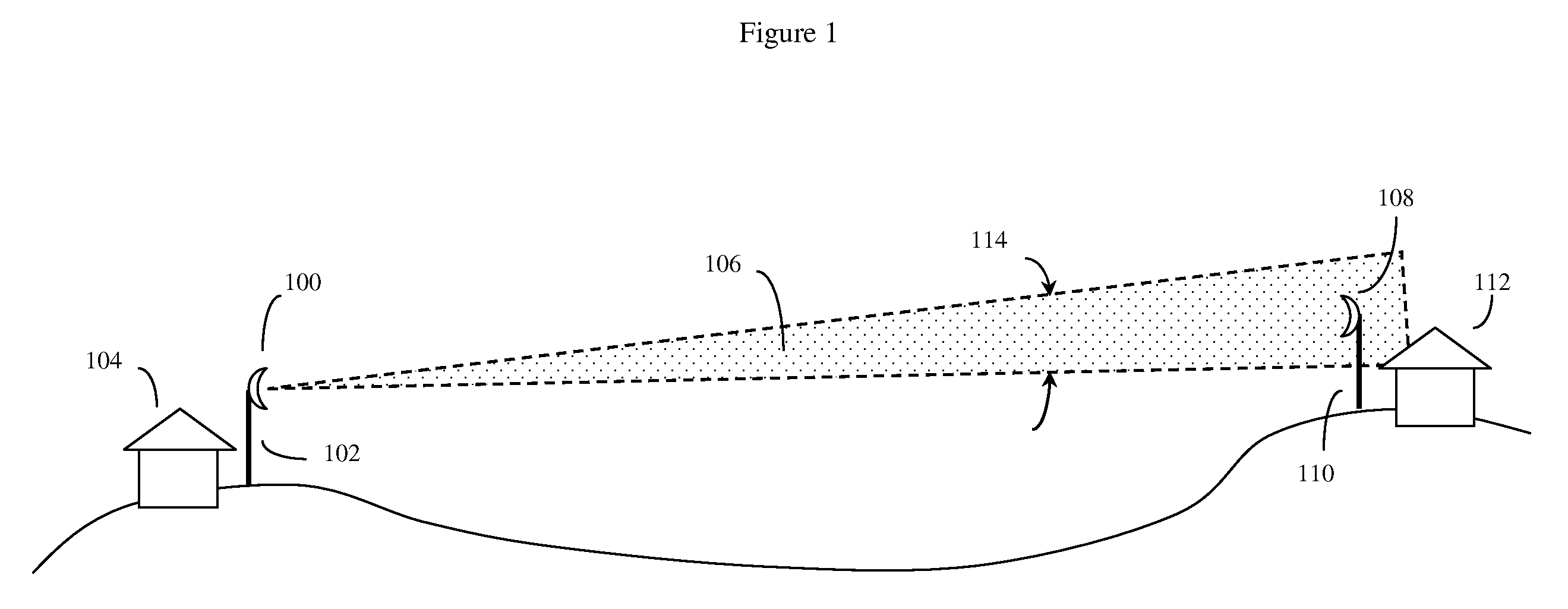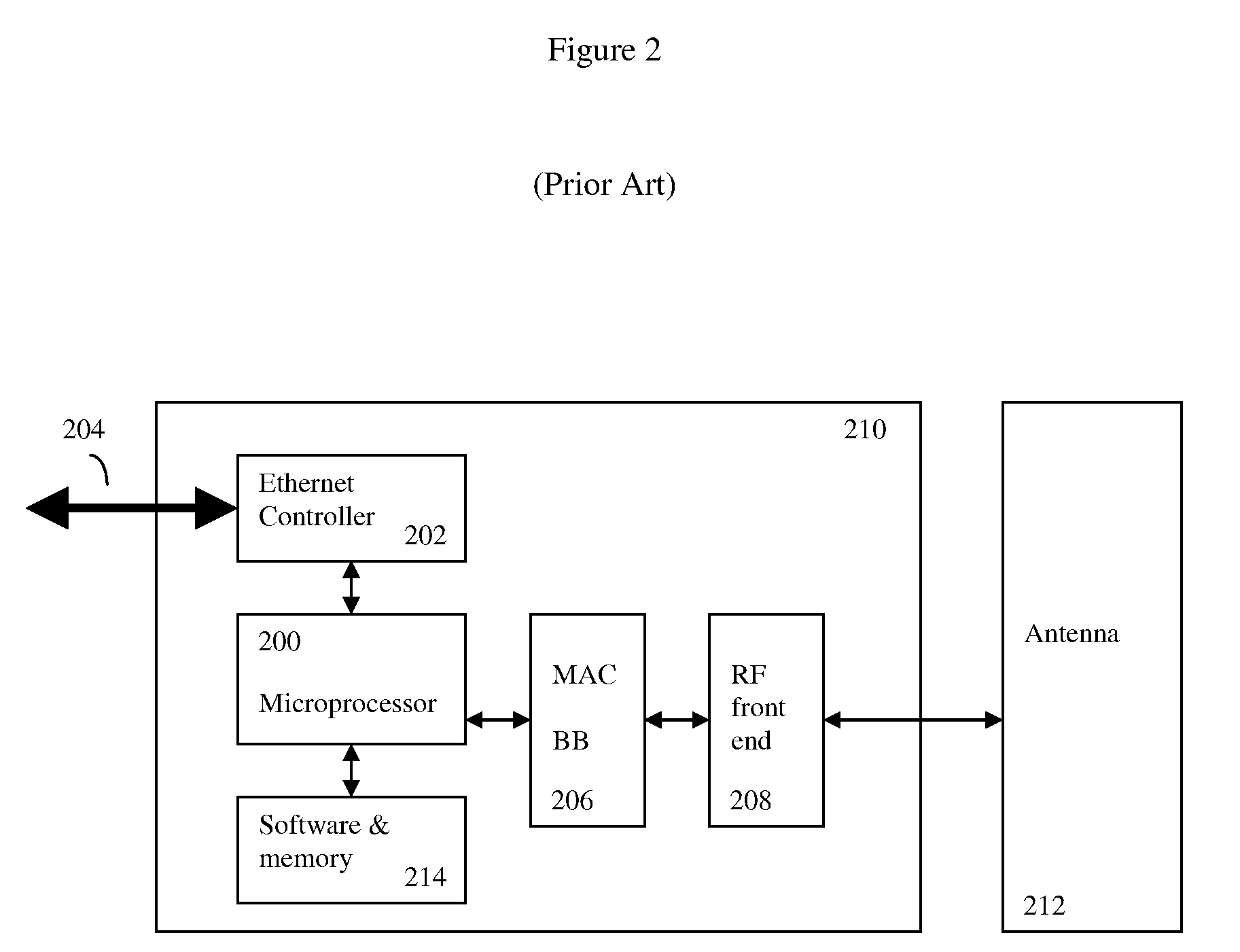Long-distance wireless-lan directional antenna alignment
a technology of directional antennas and long-distance wireless lans, which is applied in the direction of antennas, antenna details, electrical equipment, etc., can solve the problems of increasing the cost of these system chipsets, and increasing the cost of these process steps. , to achieve the effect of ultra-low cost, ultra-low weight and low cos
- Summary
- Abstract
- Description
- Claims
- Application Information
AI Technical Summary
Benefits of technology
Problems solved by technology
Method used
Image
Examples
Embodiment Construction
[0029]As previously discussed, this invention is designed for operation with ultra-low cost Wi-Fi, Bluetooth, or Zigbee chipsets, originally intended for short range digital signal transmission. Such chipsets are commercially available from a number of vendors, including Atheros, Broadcom, Intel and other companies.
[0030]Typically a number of changes must be made to the IEEE 802.11 standard in order to enable chipsets based upon this design to operate over longer distances. These changes include modifications to the ACK timeouts. This is because the standard 802.11 stop and wait “ACK” recovery settings works poorly when, due to longer distances and speed of light issues, propagation delays are longer. As used in this patent, the criteria for chipsets that are useful for the invention are chipsets that, with proper software or chipset firmware adjustments, are capable of implementing the IEEE 802.11 (Wi-Fi), IEEE 802.15 (Bluetooth), or IEEE 802.15.4 (Zigbee) standards. This definitio...
PUM
 Login to View More
Login to View More Abstract
Description
Claims
Application Information
 Login to View More
Login to View More - R&D
- Intellectual Property
- Life Sciences
- Materials
- Tech Scout
- Unparalleled Data Quality
- Higher Quality Content
- 60% Fewer Hallucinations
Browse by: Latest US Patents, China's latest patents, Technical Efficacy Thesaurus, Application Domain, Technology Topic, Popular Technical Reports.
© 2025 PatSnap. All rights reserved.Legal|Privacy policy|Modern Slavery Act Transparency Statement|Sitemap|About US| Contact US: help@patsnap.com



